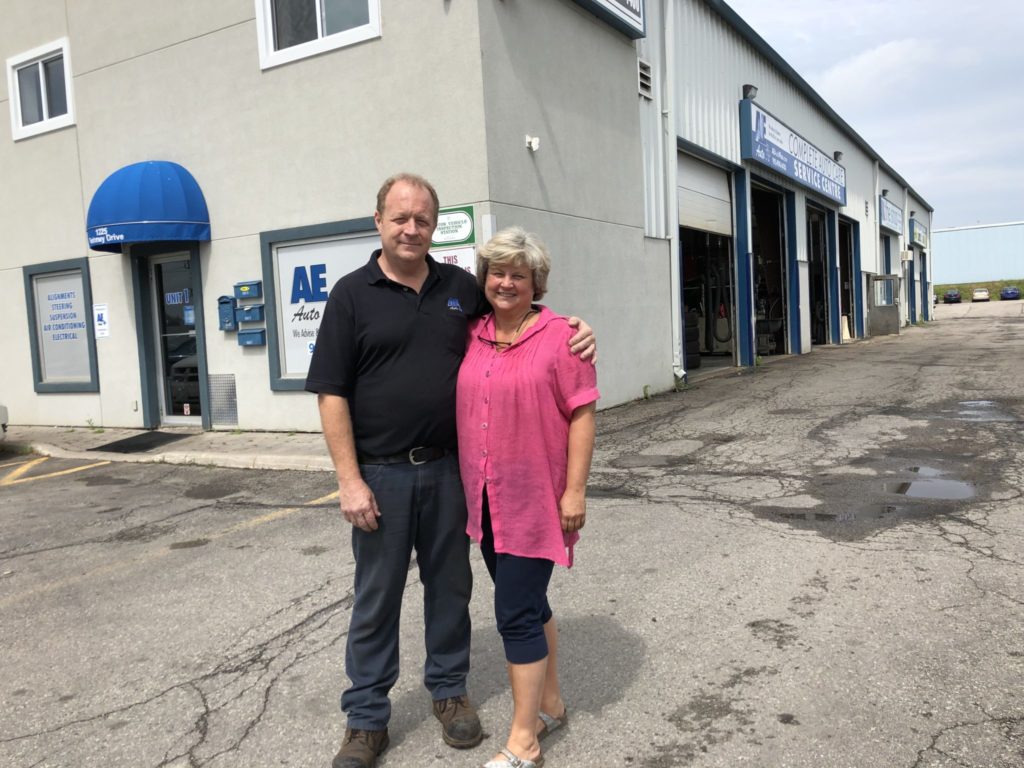
The letter Susan Eaton of AE Auto Plus sent to her customers in May was anything but a regular marketing message. It was a plaintive farewell.
The letter, addressed to “our wonderful clients,” did not mince words about the reason she was writing.
“Due to a 67% increase in rent, we have been forced to make a very painful decision. After being in the community for over 25 years, AE Auto Plus in Thornhill, Ont. will be closing its doors,” it said.
“We have so many fond memories. So many of you have been clients since the beginning. You have seen Andy and I get married. You sent us gifts and well wishes at the birth of our two sons. And we have seen your families grow up too,” she wrote. “I hope you carry in your hearts the same cherished memories we do.”
“It was a beautiful letter, stating clearly how we think we were wronged,” says her husband, Andy Eaton. “We were there 25 years and the landlord just dropped off a new lease, without any explanation. I called the next morning and said, ‘There must be some mistake.’ And they just said, “Nope. No mistake.’”
Susan says the hard numbers shocked them both.
I called the next morning
and said, ‘There must
be some mistake.’
And they just said,
“Nope. No mistake.’
“We’d been paying $9 a square foot on what we call a double dead-end street – the dead end of a dead-end street. And it was going to $17 a square foot, plus this, plus that, plus, plus, plus,” she says. “How do you absorb a 67% increase? You can’t! And you can’t pass it all on to the consumer either. So we had to shut it down.”
The only thing that saved the business was that in 2016, they’d opened a second location in nearby Newmarket because, in a way, they’d seen this coming. They’d seen the risk of renting a shop in an area where industrial-zoned land (particularly for automotive use) was so precious.
Formerly operated as Clare’s Auto Repair, the new shop had eight bays that kept three technicians and two apprentices very busy.
Their son, Nathan, joined the staff as a general worker, Andy worked the counters at both locations, and Susan did the books and all the marketing.
For a while they liked being multi-shop owners.
“It’s pretty cool,” she admits. “You do feel like a bit like a hot shot. You get to say things like, ‘At my other location…’ But it comes at a cost.”
They worked long days, constantly driving between the two locations, getting home late, eating cold pizza, falling asleep at the kitchen table. Worse, running two shops forced them to work apart more than they liked.
But just as life was starting to feel normal again, the world changed. That second shop was now their only shop.

It’s still not running quite as smoothly as they’d like, but it has one thing their original shop could never offer them. Stability.
They own nearly an acre of land, and have a big enough building to rent part of it to other tenants. When retirement comes, they’ll sell the shop and live off that rental income.
“Like most shop owners, we didn’t have much a retirement plan before,” says Susan. “We weren’t putting money away in a portfolio. We didn’t have anything of real value. Now we do.”
Furthermore they’ve begun paying rent again – but this time it is paid by their shop to their own holding company, which legally owns the land and the building.
“Yes, it’s our own rent, but it still has to be paid so that when we sell the business, we can say, ‘Yes, that’s the rent you’re going to pay, and we know you can make it go on that, because we did it for years.’”
“I think a lot of shop owners are in the same boat we were in,” says Andy. “They’re renting their facility. They’re at the mercy of their landlord. And the real problem is that without owning the land or the building, your business isn’t worth as much as you probably hope it is. All you have is your equipment, your customer list, and some goodwill in the community. Unless you sell it to one of your employees, who can harness that goodwill and keep it going, it doesn’t add up to much.”
He believes shop owners who don’t own their land or their building, need to start thinking about the future.
“You have to sock away whatever you can for that day when they knock on your door. You have to be prepared.”
For the Eatons, everything seems to be working out. The new place has more potential than their original shop.
“We could really make it rock,” says Susan. “In the old place by 11 a.m. we knew how our day was going to end up. Here, at 1:30 p.m. it’s a whole new ball of wax. Someone will get towed in off Highway 404, or they’ll just drop in because they happened to notice us, or see a new sign. It can be a slow morning but then afternoon is hopping!”
Andy did some mental math when they closed the old shop. He figured if they could keep half of Clare’s customers, and half of their Thornhill customers, they’d be fine.
“I think we saved more than half of Clare’s customers and our old customers are making the drive. So far, it’s looking good.”












Leave a Reply